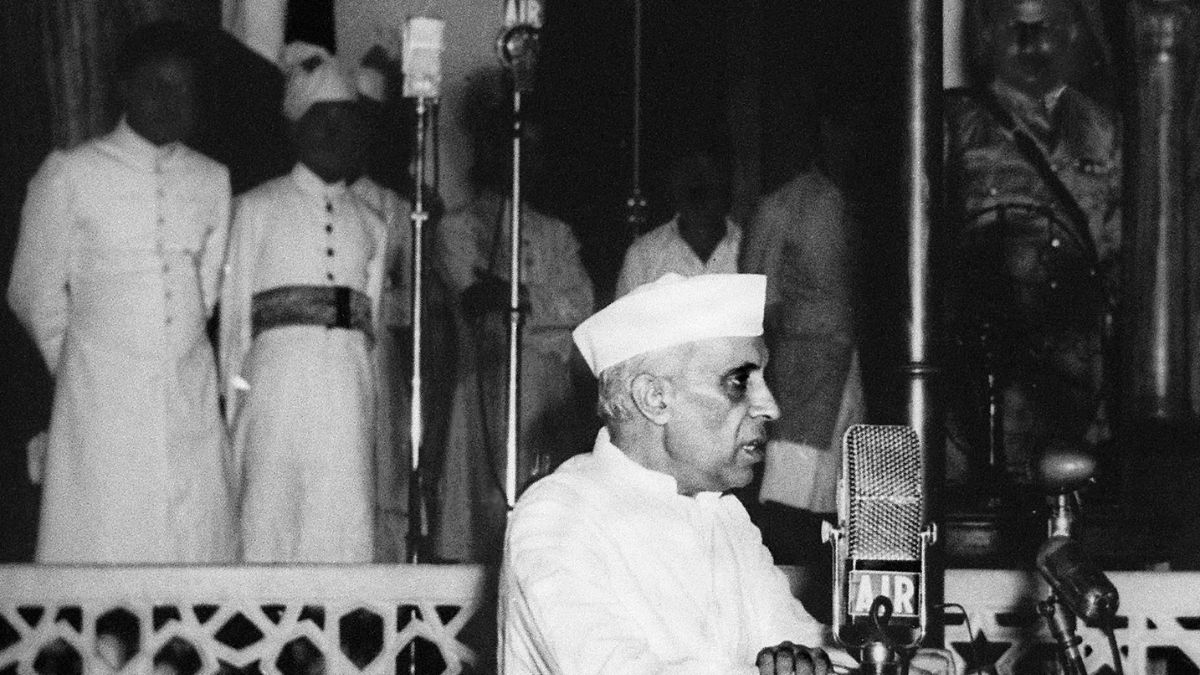India proudly marks its Independence Day every year on August 15. Prime Minister Narendra Modi addressed the nation from Delhi’s Red Fort on Thursday and hoisted the national flag to observe 78 years of India’s freedom from the British.
As India celebrates the historic day with much fervour, let’s rewind the clock to recall how the country ushered in its first Independence Day on 15 August 1947.
How India’s independence came to be
It was a hard-fought battle. By the time India won its freedom in August 1947, the British had ruled the country for nearly 200 years.
It was the efforts of Mahatma Gandhi, Subhas Chandra Bose, Jawaharlal Nehru, Sarojini Naidu, Annie Besant, Aruna Asaf Ali, and several other freedom fighters who eventually got freedom for India.
The Indian freedom movement gained momentum after the First World War. Britain, which was facing internal issues following the Second World War, grew uncertain about its rule in India amid increased nationalist sentiments and Gandhi’s call for self-rule.
In early 1947, United Kingdom Prime Minister Clement Attlee promised to end British rule in India by June 1948.
However, India’s last Viceroy, Lord Mountbatten, advanced the date to August 15, 1947. India got its freedom from the British Raj but was divided into two nations – India and Pakistan.
Impact Shorts
More ShortsIndia’s first Independence Day
August 15, 1947, was a joyous occasion for India, which would be helmed by its own leaders.
The enthusiasm of a free country was palpable in the air. Nehru, who was to become India’s first prime minister, welcomed Hindu holy men at his home in Delhi on the eve of independence, as per a Time magazine report.
Later, he and other political leaders gathered in the Constituent Assembly Hall in Parliament. It was here Nehru delivered his oft-quoted speech, ‘Tryst with destiny’.
“Long years ago we made a tryst with destiny, and now the time comes when we shall redeem our pledge. At the stroke of midnight hour, when the world sleeps, India will awake to life and freedom,” he told the gathering. “A moment comes, but rarely in history, when we step out from the old to the new, when an age ends, and when the soul of a nation, long suppressed, finds utterance."
The Congress had earlier directed cinema halls for the free screening of India’s first Independence Day celebrations. As the event began at the Constituent Assembly, thousands of elated Indians assembled outside, according to a Free Press Journal report.
The top political leaders present in the hall observed two minutes of silence for those who lost their lives in the freedom struggle. As Jana Gana Mana was not officially India’s national anthem until January 24, 1950, a rendition of Vande Mataram reverberated across Parliament to mark India’s independence, the piece noted.
ALSO READ: Independence Day 2024: How India’s gritty and courageous women helped in the freedom struggle
Time magazine wrote at the time, “And as the twelfth chime of midnight died out, a conch shell, traditional herald of the dawn, sounded raucously through the chamber. Members of the Constituent Assembly rose. Together they pledged themselves “at this solemn moment . . . to the service of India and her people. ..”
It mentioned that Delhi erupted in joy celebrating independence with the colours of the national flag – orange, white and green. “Bullocks’ horns and horses’ legs were painted in the new national colors, and silk merchants sold tri-coloured saris. Triumphant light blazed everywhere,” as per Time.
As the government did not want everyone to be happy on such a historic day, political prisoners were freed and all death sentences were commuted to life imprisonment. All slaughterhouses were shut so that no animal would be killed.
India’s Tricolour was first hoisted at the Princess Park near India Gate on August 15. The next day, Nehru unfurled the national flag at Red Fort, as per Wion.
On 15 August, Delhi saw a gathering of about 500,000 people around Parliament and Rashtrapati Bhawan who chanted slogans like Inquilab Zindabad and Mahatma Gandhi ki jay. They danced on streets to drum beats as news spread that India was now free, reported Free Press Journal.
But one person was missing from the festivities in Delhi – Mahatma Gandhi.
Where was Gandhi on India’s first I-Day?
Gandhi was not in Delhi when India rang its first Independence Day. He was in Calcutta attempting to douse the communal fire stoked by partition.
His appeal for peace between Hindus and Muslims briefly worked.
As India gained freedom from British rule at midnight on 14-15 August, Bapu was “fast asleep” after spinning his khadi yarn, Tushar Gandhi wrote for The Hindu.
According to The Collected Works of Mahatma Gandhi, in a letter to his friend Agatha Harrison in London, the leader said “my way of celebrating great events, such as today’s, is to thank God for it and, therefore, to pray”.
With inputs from agencies
)